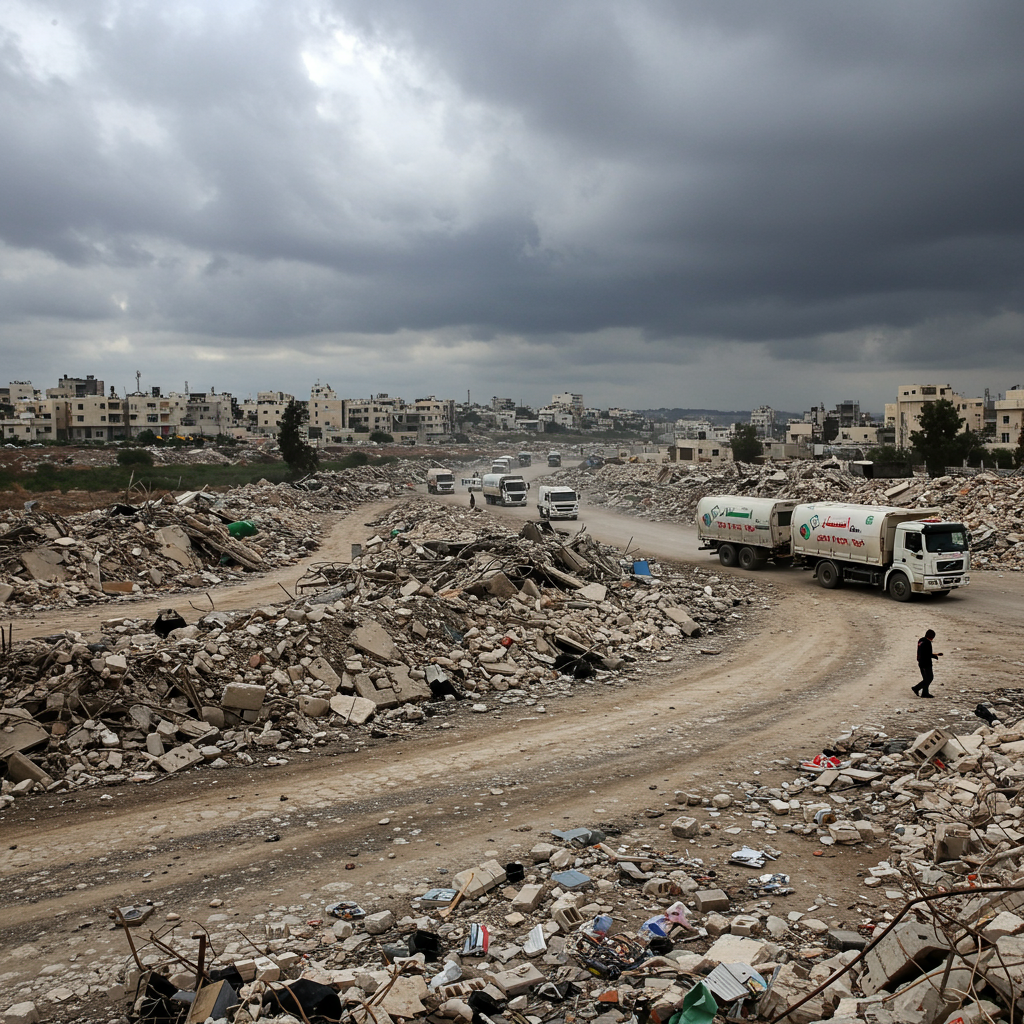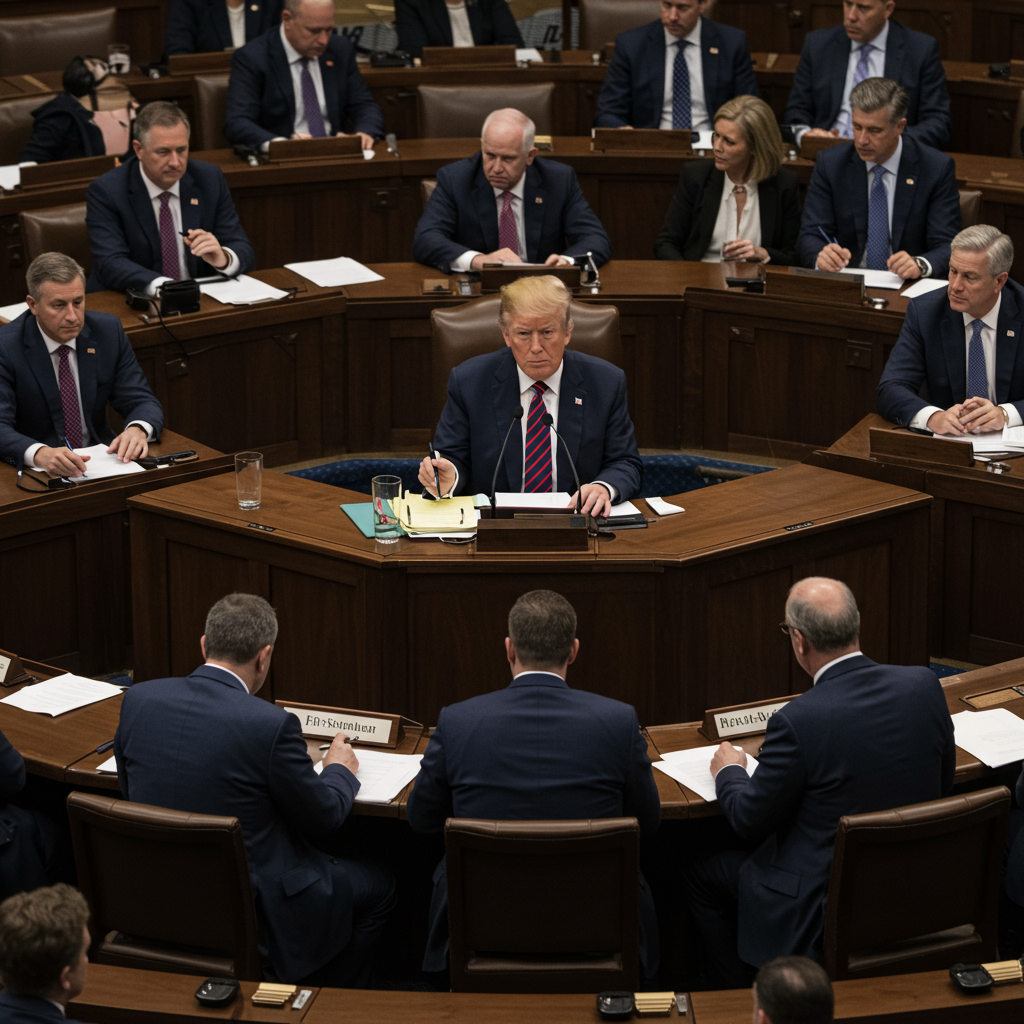The delicate Gaza ceasefire faces renewed pressure as the Israeli military confirmed one body, returned by Hamas, does not belong to an Israeli hostage. This revelation deepens uncertainty surrounding the critical exchange of deceased captives and Palestinian bodies, casting a shadow over the truce. Amidst these developments, vital humanitarian aid shipments are slowly reaching Gaza, a region grappling with unprecedented destruction and a severe humanitarian crisis. This article explores the multifaceted challenges of the ceasefire, examining the repatriation efforts, aid dilemmas, and persistent geopolitical tensions.
The Repatriation Challenge: Hostage Bodies and Misidentification
The recent ceasefire agreement, intended to halt two years of devastating conflict, stipulated the return of all living and deceased hostages by Hamas, alongside a significant exchange of Palestinian prisoners by Israel. While 20 living hostages were released, the process of repatriating deceased remains has proven exceptionally complex and emotionally charged.
On Tuesday, Hamas transferred four more bodies to Israel, following an initial four on Monday. Among those identified with profound grief were Staff Sergeant Tamir Nimrodi, Uriel Baruch, and Eitan Levi, whose families had endured agonizing uncertainty. Earlier returns included Guy Illouz, Capt. Daniel Peretz, Yossi Sharabi, and Bipin Joshi. Each identification brings a wave of sorrow and closure for grieving families.
Forensic Setback: A Body That Didn’t Match
A critical setback occurred when forensic testing by the Israeli military definitively determined that one of the bodies handed over by Hamas was not that of an Israeli hostage. This misidentification immediately raised concerns, adding to the inherent fragility of the truce. While there was no immediate information on the individual’s identity, the incident underscores the severe challenges of recovering remains in a war-torn region.
Hamas’s armed wing claims it has returned all accessible bodies, emphasizing that locating the remaining deceased hostages requires “extensive efforts and special equipment” due to the widespread destruction across Gaza. Israel, still awaiting the return of 28 deceased hostages, views the full repatriation as a non-negotiable term of the Gaza ceasefire. Prime Minister Benjamin Netanyahu has explicitly stated, “We will not compromise on this and will not stop our efforts until we return the last deceased hostage.” This isn’t the first such incident; a previous ceasefire also saw a misidentified body initially believed to be Shiri Bibas.
The Plight of Palestinian Remains: Signs of Mistreatment
In a parallel, equally somber exchange, Israel returned 45 additional bodies of Palestinians to Gaza, bringing the total to 90. These returns are a crucial part of the ceasefire agreement, allowing families to bury their loved ones. However, forensic teams examining these bodies in Gaza have reported deeply disturbing findings.
Unsettling Discoveries and Identification Hurdles
Health officials in Gaza documented signs of mistreatment on many of the returned Palestinian remains. Some bodies arrived shackled, with hands and legs cuffed, and marks consistent with physical abuse. One particularly harrowing report noted a body with a rope around its neck. Dr. Mohammed Zaqout, Director General of hospitals for the Hamas-run health ministry, mentioned bodies were often marked with codes rather than names, hindering identification.
The challenge of identification is compounded by the severe state of the remains – many were decomposed, burned, missing limbs, or coated in sand. Israeli restrictions on allowing DNA testing equipment into Gaza further complicate efforts, forcing morgues to rely heavily on physical features and clothing. The Gaza Health Ministry released images of 32 unidentified bodies to aid desperate families in recognizing missing relatives, like Rasmiya Qudeih, 52, who waited anxiously at Nasser Hospital, hoping her son, missing since October 7, 2023, would be among the returned. The Red Cross managed to provide names for only three of the deceased, leaving countless families in agonizing limbo.
Gaza’s Deepening Humanitarian Crisis and Aid Flow
Beyond the somber exchange of bodies, the ceasefire deal aimed to alleviate the catastrophic humanitarian situation in Gaza. Humanitarian aid, including food, fuel, and medical supplies, began flowing into the Strip on Wednesday. A convoy of 400 trucks crossed from the Egyptian side of the Rafah crossing into an Israeli inspection area at Kerem Shalom before entering Gaza.
Aid Scale and Political Leverage
Organizations like the World Food Program (WFP) confirmed their trucks’ arrival, following a two-day pause due to hostage exchanges and a Jewish holiday. However, the scale of current deliveries is deemed insufficient by international bodies. The United Nations humanitarian chief, Tom Fletcher, underscored the need for a “dramatic boost,” emphasizing that hundreds of trucks are “nowhere near the thousands needed weekly.” An estimated 190,000 metric tons of provisions reportedly await at the borders.
The UN has voiced “grave concern” over the humanitarian situation, with nearly all of Gaza’s 2.2 million people displaced. Famine is already present in the north, and residents describe their hometowns as “completely uninhabitable,” lacking water, electricity, and basic services. Displaced families like those of Seham Mosaleh and Saadia Rabie are living in tents, desperate for rebuilding efforts, sanitation, and medical access. Israel had previously threatened to reduce aid if Hamas delayed body returns, a move criticized by the UN, which firmly stated that “withholding aid from civilians is not a bargaining chip.”
Geopolitical Undercurrents and Future Uncertainty
The fragility of the Gaza ceasefire is underscored by a volatile political landscape and ongoing accusations of violations. US President Donald Trump has played a prominent role, warning that he would consider allowing Israel to resume military action if Hamas fails to uphold its agreement. Trump suggested he “had to hold them back” previously and would allow Israel to “knock the crap out of them” if Hamas refuses to disarm.
Disarmament Demands and Internal Control
International calls for Hamas to disarm are growing louder. Israel’s Defense Minister, Israel Katz, has instructed the military to prepare a “comprehensive plan to defeat Hamas” if the war resumes. Adm. Brad Cooper of US Central Command explicitly urged Hamas to “fully stand down, strictly adhering to President Trump’s 20-point peace plan and disarming without delay.”
Meanwhile, reports suggest Hamas is tightening its internal control within Gaza, urging residents to report “wanted individuals,” including alleged collaborators. Video footage has emerged, reportedly showing masked Hamas gunmen executing several men in Gaza City streets, further fueling calls for the group to cease violence against Palestinian civilians. Hamas spokesperson Hazem Kassem, while affirming efforts to return bodies, also accused Israel of violating the deal with recent shootings in eastern Gaza City and Rafah. Israel, in turn, stated its military is operating along agreed deployment lines, targeting anyone who approaches them.
Despite the ongoing conflict and immense suffering, there are glimmers of resilience. Notably, 26,000 secondary school pupils in Gaza recently sat their general examinations electronically, with results published for the first time in two years, a testament to enduring human spirit amidst profound devastation.
Frequently Asked Questions
What new challenges emerged regarding the return of deceased hostages from Gaza?
A significant new challenge arose when the Israeli military announced that one of the bodies handed over by Hamas was forensically identified as not belonging to an Israeli hostage. This misidentification complicates the delicate exchange process, adding tension to the Gaza ceasefire agreement, under which Israel still awaits the return of 28 deceased hostages. Hamas claims difficulties in locating all remains due to widespread destruction.
How are humanitarian aid efforts progressing in Gaza, and what are the main obstacles?
Humanitarian aid, including 400 trucks of food, fuel, and medical supplies, has started entering Gaza via the Rafah and Kerem Shalom crossings. The World Food Program and Egyptian Red Crescent are involved. However, the United Nations stresses that these shipments are “nowhere near the thousands needed weekly” to address the severe crisis. Key obstacles include the sheer scale of need (2.2 million displaced, famine in the north), the destruction of infrastructure, and political leverage, as Israel previously threatened to cut aid due to slow hostage returns.
What are the international demands for Hamas, and how has the group responded to these pressures?
International leaders, including US President Donald Trump and US Central Command’s Adm. Brad Cooper, are demanding that Hamas disarm, cease weapon manufacturing, and stop smuggling. Trump has warned of renewed military action if Hamas fails to comply with the disarmament terms of the peace plan. Hamas, while stating it is working to fulfill its obligations regarding body returns, has also accused Israel of violating the ceasefire with recent shootings. Reports also indicate Hamas is tightening internal control within Gaza, urging residents to report “wanted individuals” and allegedly carrying out executions of alleged gangsters.
Conclusion
The recent developments surrounding the Gaza ceasefire underscore its precarious nature. The misidentification of a returned body, coupled with disturbing forensic findings on Palestinian remains, highlights the profound human cost and logistical complexities of the conflict’s aftermath. While essential humanitarian aid begins to trickle into a devastated Gaza, the scale of need remains immense. Political tensions persist, with strong international demands for Hamas’s disarmament and warnings of renewed conflict. The path forward for Gaza, its people, and the broader region remains fraught with uncertainty, demanding sustained diplomatic efforts and a unwavering commitment to human dignity amidst unprecedented challenges.



